|
Sustainability and Diet A sustainable diet recognizes the interdependence of the health of humans, plants, animals, ecosystems, and the planet. Currently, the food system produces one-third of all greenhouse gas emissions, uses a large amount of water and land, and threatens biodiversity. In this blog, we will explore a few aspects of a sustainable diet and some individual choices you can make to decrease greenhouse gas emissions, land usage, and water usage. What is a Sustainable Diet? According to the Food and Agriculture Organization, sustainable diets are those with a low environmental impact, are culturally acceptable, affordable, use natural resources responsibly, and consider future generations' wellbeing. Criteria under consideration for sustainable diets include:
More sustainable dietary patterns include increased intake of vegetables, fruit, whole grains, beans/lentils, and other plant-based foods. Plant-forward diets like the DASH, Mediterranean, and vegan/vegetarian diets also have lower environmental impacts than the Standard American Diet. Environmental Impact of Specific Foods In contrast to what a sustainable diet is, the following lists some of the foods with high environmental impacts:
The Connection between Human Health and Planetary Health Choosing diets rich in whole and plant-based foods benefits the planet and human health. A plant-based diet rich in whole foods includes nutrients like fiber, phytochemicals, minerals, and vitamins. It is also anti-inflammatory. According to the American Heart Association, consuming less meat and more whole plant-based foods is associated with lower rates of heart disease, stroke, obesity, high blood pressure, high cholesterol, type II diabetes, and many cancers. The Mediterranean diet is also associated with decreased cancer, cardiovascular disease, and cognitive decline rates. It’s an added benefit that eating healthfully often coincides with caring for the environment. Tips for Implementing a More Sustainable Diet Try the Healthy Plate Method When designing meals, using the Healthy Plate method can help create a balanced plant-forward meal. The Healthy Plate has ½ of your plate as non-starchy vegetables and fruit, ¼ of your plate protein, and ¼ of your plate carbohydrates (choose whole grains and complex carbohydrates when possible). This method will help you fill more of your plate with vegetables and plant-based foods. Check out the Harvard website to get more information and a picture of the Healthy Plate Method that can help you follow this dietary pattern: Mixing up Protein Choices When choosing proteins, consider choosing plant-based proteins (like beans, lentils, tofu, seitan, nuts, seeds, soy, etc.), fish, or poultry a few times a week to increase the sustainability of your diet. While legumes have a relatively high land and water usage, their land and water usage and greenhouse gas emissions are still lower than those of red meat. Poultry and fish also have a lower environmental impact than red meat. Local and Seasonal Foods Another aspect of sustainable diets is choosing local or seasonal foods. This can reduce the carbon footprint from transportation and storage, connect people to their local food systems and farmers, and enhance the local economy. Due to the globalization of the food system, food often travels hundreds of miles before it reaches our plates. Local, seasonal produce also has higher amounts of certain antioxidants and vitamins that can break down during transportation and storage. Here in Washington, summer is arriving. Some foods that are in season include strawberries, chives, cilantro, fennel, arugula, baby bok choy, chards, collard greens, dandelion greens, lettuce, spinach, snap/snow peas, pea vines, radishes, rhubarb, and many others. Some ways to be a part of the local harvest include attending local farmers markets, considering a CSA from a local farm, or buying these foods in grocery stores. Check out the seasonality charts below for more information on local, seasonal produce: Seasonal Recipe: Strawberry Spinach Salad with Poppy Seed Dressing Try this salad with local and spring/summer season ingredients from Washington, like fresh strawberries and spinach. Strawberry Spinach Salad:
Poppy Seed Dressing:
Instructions:
Rebecca Griest, Dietetic Intern, Seattle Pacific University Sources:
0 Comments
Maintaining a healthy heart starts with the food we eat. Common staples in the American diet include lots of salt and foods high in saturated fat, making it difficult to maintain a heart-healthy diet. However, with some additional knowledge and intentional eating strategies, we can take easy steps to prevent the risk of cardiovascular diseases. Sodium Sodium, consumed as salt, is naturally found in many foods and is an important electrolyte for our bodies to function. While we need some sodium, excess sodium intake can lead to high blood pressure and greater cardiovascular disease risk. Excess sodium intake is extremely common for Americans, with the average intake being 3393 mg per day. In comparison, the recommended amount is no more than 2300 mg according to the Dietary Guidelines for Americans (DGA). There are several ways to habitually lower our sodium intake, such as:
When grocery shopping for foods, we can be mindful of sodium intake by reading labels. One useful technique is observing the calorie-to-sodium content ratio. Generally, a 1:1 ratio is ideal (e.g.100 calories:100 mg sodium per serving). An even better ratio is if the calories are higher than the sodium (e.g.100 calories:75 mg sodium per serving). By taking this approach, we can decrease our daily sodium intake from the groceries we buy. Here is a list of common groceries that are low in sodium:
Cholesterol Cholesterol is a sterol ester lipid; a waxy, fat-like substance formed in our liver as well as absorbed from some of the foods we eat. While cholesterol gets a bad rap, our bodies need it to function properly. They serve us in many ways, such as hormone creation, cell formation, vitamin D production, and bile production in our gallbladders. However, cholesterol is a non-essential nutrient, meaning that we do not need cholesterol from food since we create enough internally to serve all the functions described above. While we need cholesterol, too much of it, along with high serum fat (circulating excess fat in our bloodstream), can increase plaque buildup in our arteries, leading to cardiovascular diseases such as heart attacks or strokes. Cholesterol can be separated into two categories: HDL (high-density lipoprotein) and LDL (low-density lipoprotein):
Dietary fat: Unsaturated Fat Our dietary fat influences our total HDL and LDL, the two cholesterol categories affecting heart health. There are three types of fats we consume: unsaturated fat, saturated fat, and trans fat.
Dietary fat: Saturated and Trans Fat
Fiber Fiber is the indigestible portion of plant foods that feeds our healthy gut bacteria and regulates our digestive system. Fiber has been shown to have many beneficial effects on heart health, including lowering cholesterol and controlling blood sugar. Soluble fiber (found in oats, chia seeds, insides of fruits, etc.) can also interfere with cholesterol absorption. To enjoy the benefits from fiber, include plenty of fruits, vegetables & whole grains in your diet. In conclusion, prioritizing heart-healthy nutrition is essential for overall well-being. By understanding the impact of sodium, cholesterol (LDL and HDL), different fat types, and the importance of fiber, we empower ourselves to make informed dietary choices. Small changes can lead to significant improvements in heart health. Let's embrace these nutritional principles and take proactive steps towards a healthier heart and life. Daniel Chambers, SPU Dietetic Intern References
 Eggs are another one of those foods that have been demonized in the past. Now, with more research available, we have a better understanding of nutrients found in eggs and their benefits. Should eggs stay in our diet? Let’s dive into all things eggs: Egg Terminology: Companies seem to keep adding more and more new labels to their eggs, such as free-range and pasture-raised, but what do these mean? Let’s break down some of those labels:
Will Eggs Raise My Cholesterol? Eggs do contain some cholesterol, but current research suggests that cholesterol found in food has a small effect on cholesterol levels in the blood. Saturated and trans fats found in foods have been shown to have a much more significant impact on cholesterol production in the liver. Eggs are relatively low in saturated fat, containing only 1.5 grams per egg, compared to the 6.3 grams found in 1 tablespoon of butter. Other foods high in saturated fat include coconut oil, butter, bacon, cheese, sausage, and processed foods. Rather than avoiding eggs, consider what you are eating alongside your eggs or what you are cooking your eggs in. Eggs contain many beneficial nutrients that play diverse roles throughout the body. Nutrients Found in Eggs: Eggs are packed full of nutrients. Here are a couple of star nutrients found in eggs:
What’s up with the Avian Flu? Avian flu, also known as the bird flu, is a virus that infects all birds, including chickens. It can cause mild to severe symptoms and can even be fatal to birds. Humans cannot get the avian flu from well-cooked eggs, as the cooking process kills the virus. The egg industry has many years of experience with this flu. Egg farmers work closely with the USDA, the Food and Drug Administration (FDA), and the World Health Organization (WHO) to identify and manage outbreaks. Overall, eggs can make a great meal addition from a health perspective, in moderation of course. Eggs contain many nutrients that your body needs, many of which can only be found in a handful of foods. There are also infinite ways you can use eggs in your cooking. Here is a recipe that is simple, quick, delicious, and leaves plenty of room for creative personalization. Enjoy! 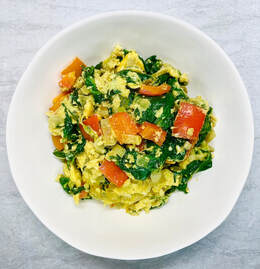 Veggie Scramble Makes 4 servings Ingredients:
Dice your onion and bell pepper and chop the green onion into ¼ inch pieces. Heat a skillet over medium heat and add oil. Add diced onion and the green onions. Saute until softened, about 4 minutes. Add bell pepper and spinach, and saute for another 3 minutes. When all veggies have softened, add in your beaten eggs. Add salt and pepper. Reduce heat to low and stir. Cook until eggs have set into curds. Add salt and pepper. Sprinkle with cheese and stir (optional). Enjoy! Nutrition per serving: 289 calories, 17g protein, 7g carbohydrates, 2g fiber, 21g fat, 550g sodium Anca Soloschi, SPU Intern References:
 Leaky gut is a term used frequently nowadays, with little to no explanation of what it is and what can cause it. Is leaky gut even a real thing? Let’s dig into it: What is Leaky Gut? A leaky gut refers to a dysfunction of the intestinal lining and increased permeability of that lining. Normally, the gut is lined with cells that only allow certain substances to pass and prevent the absorption of potentially harmful substances and agents, like harmful bacteria, toxins, undigested food, or substances that can cause inflammation. With leaky gut, the gut lining is compromised in some areas, and substances mentioned above can pass between the intestinal cells (referred to as altered interstitial permeability) into the bloodstream more easily, which can cause inflammation throughout the body. Symptoms of leaky gut are shared with other health conditions that are correlated to leaky gut and can include:
What Causes Leaky Gut? Increased intestinal permeability or gaps between the cells lining the gut can be caused by many things, including:
Several diseases have been correlated to leaky gut and can be either a cause or effect of these diseases, including:
How to Heal Leaky Gut Here are a couple of things you can do to help heal your gut:
2. Probiotics Eating foods high in probiotics, such as yogurt, kefir, kimchi, sauerkraut, miso, etc., can improve intestinal cell barrier function by introducing more “good” bacteria into the gut, strengthening the intestinal mucosal barrier, improving antimicrobial activity, and reducing intestinal permeability. 3. Vitamins Vitamins A and D play a vital role in regulating gastrointestinal balance. Foods high in vitamin A include beef liver, egg yolks, dark-green leafy vegetables, and yellow and orange fruits and vegetables. Vitamin D is found in fatty fish, eggs, mushrooms, dairy, and orange juice fortified with vitamin D. 4. Fiber Eating adequate fiber is essential to ensure that our microbiome is being fed. Fiber has anti-inflammatory properties and helps regulate the intestinal barrier. Fiber is found in plant foods such as fruits, vegetables, beans, legumes, nuts and seeds. We need between 25 and 38 grams of fiber daily. 5. Medicinal herbs Certain medicinal herbs can have a soothing and healing effect on the GI system, including slippery elm, green tea, licorice, marshmallow, ginger, peppermint, and plantain. A great way to take advantage of the benefits of these herbs is by making tea from them. 6. Glutamine Glutamine is an amino acid that is critical in healing the gut lining, as it helps build the membrane of intestinal cells. Bone broth is a food that is high in glutamine and can be used to help heal the gut. Below, you will find a recipe for bone broth. *Bone broth may be unsuitable for those following a low FODMAP diet unless the recipe or product uses low FODMAP ingredients.  Pho-Inspired Bone Broth Recipe Recipe makes 3 quarts - 2 lbs chicken feet - 12 cups water - 1 1-inch piece of ginger, chopped - 3-4 garlic cloves, crushed - 6-8 whole black peppercorns - 1 cinnamon stick - 1 star anise - 5-8 coriander seeds (optional) - 2 bay leaves - 1 onion, cut into quarters - 2 stalks of celery, chopped - 1 carrot, chopped - 1 teaspoon salt, or more to taste Add all the ingredients to a stock pot or a crock pot and cover with the water, leaving an inch of space at the top. If using a crock pot, add all the ingredients except carrot, onion, and celery (add these in the last 6-8 hours of cooking). Cover with a lid and cook on low for at least 4 hours if cooking on the stovetop or 24 hours using a crock pot. Once the broth is done, use a strainer to filter out the solid ingredients. Add salt. Once the broth is cold, it may have a layer of fat at the top that can be removed. Store in the fridge or freezer. Nutrition per cup: 50 calories, 0g fat, 9 g protein, 2 g carbohydrates, 194 mg sodium, 0 g fiber Overall, there are many things you can do to support your gut health and heal your gut lining if it is damaged. Treating leaky gut is individualized and should be catered to your specific issues and symptoms. We recommend working with your doctor and a dietitian to come up with a treatment that is right for you! Anca Soloschi, Dietetic Intern References:
Camilleri M. Leaky gut: mechanisms, measurement and clinical implications in humans. Gut. 2019 Aug;68(8):1516-1526. doi: 10.1136/gutjnl-2019-318427. Epub 2019 May 10. PMID: 31076401; PMCID: PMC6790068. Allan S. What is leaky gut syndrome? Canadian Digestive Health Foundation. November 29, 2022. Accessed October 27, 2023. https://cdhf.ca/en/what-is-leaky-gut-syndrome/. Aleman RS, Moncada M, Aryana KJ. Leaky gut and the ingredients that help treat it: A Review. Molecules (Basel, Switzerland). January 7, 2023. Accessed October 20, 2023. https://www.ncbi.nlm.nih.gov/pmc/articles/PMC9862683/. National Research Council (US) Committee on Diet and Health. Diet and Health: Implications for Reducing Chronic Disease Risk. Washington (DC): National Academies Press (US); 1989. 11, Fat-Soluble Vitamins. Available from: https://www.ncbi.nlm.nih.gov/books/NBK218749/ Foundation P by: M. Boundless benefits of beautiful bone broth. Mindd. May 3, 2018. Accessed October 20, 2023. https://mindd.org/beautiful-benefits-bone-broth/. Few foods have attracted as much controversy as soy. It is often praised as a nutritious vegan protein source, but there is also media speculation and research suggesting potential health risks of soy, leading some to avoid it altogether. So, how do we navigate what is accurate and what is a myth? What is Soy?
Soy Controversy The concerns about soy primarily arose from two sources:
With that background, let’s get to debunking some major myths that are SOY out of line! Myth #1: Eating soy increases breast cancer risk One of the central myths in the media is that soy can increase the risk of breast cancer. Confusion about soy and breast cancer comes from older rodent studies, where soy isoflavones were shown to promote the growth of breast cancer cells. This created concern about potential adverse effects in women diagnosed with breast cancer. However, current research shows that humans metabolize soy differently than rodents. These earlier studies in which soy isoflavones promoted the growth of breast cancer in mice relate to much higher blood levels of isoflavones than what would result from humans consuming soy foods. Recent studies have found no adverse effects of soy food intake on breast cancer occurrence or deaths. One study from the American Institute for Cancer Research (AICR) showed no increase in breast cancer risk with moderate (1-2 servings/day) or even higher (3+ servings/day) consumption of soy. If you thought that was a relief, get this! The American Cancer Society (ACS) states that modest amounts of soy may actually protect AGAINST breast cancer, and scientists from AICR state soy may reduce recurrence! Increased estrogen-triggering cell growth has been linked to certain types of breast cancer. Isoflavones have estrogenic and anti-estrogen properties and can block the more potent hormone estrogen from binding to cell receptors. According to Marji McCullough with the ACS, soy isoflavones can additionally “stop the formation of estrogens in fat tissue and stimulate the production of a protein that binds estrogen in the blood, making it less able to bind to the receptor.” Myth #2: Soy reduces testosterone levels and causes feminization in men This myth comes from people worrying that if isoflavones are a phytoestrogen and can act like estrogen, it might have feminizing effects on men or disrupt male fertility. The myth was furthered by rodent studies where high doses of phytoestrogens were shown to impair male rats’ ability to produce offspring. Again, current research shows that humans metabolize soy differently than rodents, so these studies do not apply to humans. Studies suggest there are no significant effects on testosterone concentrations in men when eating soy, nor is there a connection between soy and sperm count or fertility problems. There is also no evidence from clinical studies that isoflavone exposure affects circulating estrogen levels in men. BONUS: Early studies suggest including soy in the diet may help lower the risk of prostate cancer! Myth #3: Soy is not a suitable dairy replacement As more and more plant-based milk, yogurts, and butter come onto the scene (oat milk, almond milk yogurts, etc.), some assume the original milk substitute (soy!) must not be as good as the others. Soy milk is the most similar in macronutrients to dairy, with the highest natural protein of plant-based milk. When it is fortified with calcium, vitamin D, and B12, soy is almost identical to dairy nutritionally, and it is the one dairy alternative nutritionally recognized as a dairy replacement in the Dietary Guidelines for Americans 2020-2025. Bottom line? There is no evidence that soy is bad for you; it is actually beneficial for most people’s health. 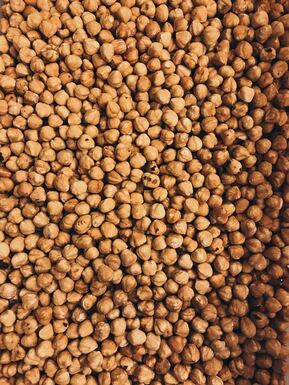 Soy Benefits:
Soy is budget-friendly, versatile, nutrient-packed, and a great source of plant-based protein. Many soy foods are also available, but mainly aim for minimally-processed soy products such as edamame, tofu, and tempeh for the most health benefits! Overall, there is no reason to steer clear of soy foods (unless you have a soy allergy) and let outdated myths keep you from enjoying soy. Talk to your dietitian if you want to know more about adding soy to your diet! Alaina Brown, Dietetic Intern References:
Collins K. Soy and cancer: Myths and misconceptions. American Institute for Cancer Research. January 25, 2022. www.aicr.org/resources/blog/soy-and-cancer-myths-and-misconceptions/?gad=1&gclid=CjwKCAjw38SoBhB6EiwA8EQVLq1ZghmEfLSvow6gZz3UkbbNXYKdWoTQxAag86IxR19ZZwDbHVcFgRoCrvsQAvD_BwE. Messina M, Mejia SB, Cassidy A, et al. Neither soyfoods nor isoflavones warrant classification as endocrine disruptors: a technical review of the observational and clinical data. Crit Rev Food Sci Nutr. 2022;62(21):5824-5885. doi:10.1080/10408398.2021.1895054 Reed KE, Camargo J, Hamilton-Reeves J, Kurzer M, Messina M. Neither soy nor isoflavone intake affects male reproductive hormones: An expanded and updated meta-analysis of clinical studies. Reprod Toxicol. 2021;100:60-67. doi:10.1016/j.reprotox.2020.12.019 Rizzo G, Feraco A, Storz MA, Lombardo M. The role of soy and soy isoflavones on women's fertility and related outcomes: an update. J Nutr Sci. 2022;11:e17. Published 2022 Mar 7. doi:10.1017/jns.2022.15 Setchell KD, Brown NM, Zhao X, et al. Soy isoflavone phase II metabolism differs between rodents and humans: implications for the effect on breast cancer risk. Am J Clin Nutr. 2011;94(5):1284-1294. doi:10.3945/ajcn.111.019638 Wu SH, Shu XO, Chow WH, et al. Soy food intake and circulating levels of inflammatory markers in Chinese women. J Acad Nutr Diet. 2012;112(7):996-1004.e10044. doi:10.1016/j.jand.2012.04.001 We have all heard the phrase, "You are what you eat." It's true that foods not only affect how we feel physically, but they can also affect our mood. The food we consume and how frequently we eat these foods can significantly impact our emotional and physical well-being. This post will explore ways to support brain health and a healthy gut, starting with some basics on neurotransmitters and why they are important. What Are Neurotransmitters?Neurotransmitters are primarily located in the brain and serve many functions, including regulation of mood and behavior. Neurotransmitters act as messengers communicating between nerve cells in your brain and the rest of your body. They are produced in the body from amino acids, the same building blocks of protein. Maintaining healthy levels of neurotransmitters can improve and stabilize our mood. The following are a few different neurotransmitters and their impact on mood. Dopamine: The Reward Center
Nutrients To Support Brain Health and MoodProtecting your brain health is not a one-nutrient job; here are some known nutrients that are vital for brain function. Omega-3 Fatty Acids Omega-3 fatty acids (Omega-3s) are essential nutrients your body does not produce. It is a polyunsaturated fat that we consume from both plants and animals. They help the cells in your body function properly by providing structure to cell membranes and supporting interactions between cells. Omega-3s are important for all your cells, especially those in the brain. There are three main types of omega-3s:
Tryptophan Tryptophan is the building block for serotonin, the feel-good chemical produced in the body after eating foods containing tryptophan. Magnesium Magnesium is an essential mineral involved in more than 300 metabolic reactions, including cell communication, the production of DNA, and cell structure. Vitamin B-6 (Pyridoxine) Vitamin B-6 is essential for breaking down proteins and tryptophan, thus aiding in the production of neurotransmitters serotonin and dopamine. Vitamin B-12 (Cobalamin) Vitamin B-12 is vital for maintaining the myelin sheath, the protective layer surrounding nerves, including those in the brain and spinal cord. The myelin sheath also affects how fast signals travel through your nerve cells. Vitamin B-12 is also essential for the production of neurotransmitters. 5 Foods to Boost Brain HealthBelow is a short list of food sources that can help support brain health and ways to incorporate them into your daily meals.
Walnuts They even look like little brains! Walnuts and walnut oil are one of the richest plant sources of Omega-3s. They are also a good source of tryptophan; one serving (about a handful) contains 318 mg of tryptophan, and the recommended daily allowance is between 250-425 mg per day. Try adding walnuts to salads, oatmeal, or a trail mix. Salmon Salmon and other fatty fish like mackerel are excellent sources of dietary Omega-3s. Fatty fish are also an excellent source of vitamin B-6. Sources of salmon include fresh, frozen, and canned. Try making salmon burgers out of canned salmon for a more budget-friendly option. Nutritional Yeast Nutritional yeast can be found in the seasoning aisle and provides a cheese-like flavor to foods. It is a great source of plant-based B vitamins, particularly vitamin B-12, a nutrient found primarily in animal products. This makes nutritional yeast a good source of B-12 for plant-based eaters. Try sprinkling it on popcorn or adding it to pasta or mashed potatoes to add the cheesy flavor. Oats Oats are a good source of tryptophan and magnesium, making them excellent for serotonin and dopamine boosting. Tryptophan is more readily absorbed by the body when consumed with a whole grain, like oats. Oatmeal is what most people think of when they hear oats but can be part of other delicious creations as well. Try adding oats to a smoothie to make it a little thicker. Cacao Cacao is the fruit or seed that cocoa and chocolate are made from. Cacao is full of antioxidants and can boost endorphins in the body. To get the benefits of cacao, try sprinkling raw cacao nibs or cocoa powder on yogurt or oatmeal. Nutrition is just one piece that can help support mental health. It’s important to remember that everyone has different nutrition needs and lifestyle routines; this is why nutrition should be personalized. Knowing how to navigate your nutrition goals can be tough, so let the nutrition experts at Sound Dietitians help. Set up an appointment today with one of our dedicated dietitians for individualized nutrition therapy. We look forward to meeting you. Tamsyn Steel, Dietetic Intern Resources 1.Best Foods for Brain Health and Mood. wisemindnutrition.com. Accessed May 10, 2023. https://wisemindnutrition.com/blog/best-foods-brain-health-mood 2.Depression, Serotonin, and the Gut | Psychology Today. www.psychologytoday.com. Accessed May 10, 2023. https://www.psychologytoday.com/us/blog/mood-mind-and-microbes/202304/depression-serotonin-and-the-gut 3.Oregon State University . Essential Fatty Acids. Linus Pauling Institute. Published September 6, 2019. https://lpi.oregonstate.edu/mic/other-nutrients/essential-fatty-acids 4.Cleveland Clinic. Dopamine: What It Is, Function & Symptoms. Cleveland Clinic. Published March 23, 2022. https://my.clevelandclinic.org/health/articles/22581-dopamine 5.Raymond JL, Morrow K. Krause and Mahan’s Food & the Nutrition Care Process. Saunders; 2020. Spring has officially begun, and with it comes all the seasonal produce filled with antioxidants! I’m sure we’ve all heard the term antioxidants thrown around in a positive light, but do we know what they actually are? In this post, we will explore what antioxidants are, where you can find them in food, and common misconceptions surrounding antioxidants. How Antioxidants Work Antioxidants are compounds rather than nutrients, which can be confusing when discussing nutrition! They are compounds found in foods that reduce inflammation and can have a protective effect on the body. They can reduce the risk of many diseases by preventing damage by free radicals. What are Free Radicals? Free radicals are molecules with one or more unpaired electrons; this makes them especially reactive & strongly want to connect to other molecules. This can create problems if we have too many free radicals and not enough free molecules for them to attach to. They begin to cause damage to cells from other places in our body, increasing inflammation and making the bodywork harder to repair itself. This is where antioxidants come in. They can attach to free radicals and prevent the damage they would otherwise cause. It’s important to remember there is no reason to fear free radicals (especially when they are balanced with antioxidants!) - they’re a normal outcome of breaking down foods through metabolism. Free radicals are also produced by the body when fighting an infection or healing from an injury. This type of oxidative stress temporarily increases inflammation & free radicals, decreasing once the fight is won. Free radical-generating substances can accelerate the damaging effects, these include alcohol, fried foods, tobacco smoke, ultraviolet radiation, etc. A buildup of free radicals is linked to a higher risk of many chronic diseases and signs of aging. Types of Antioxidants Antioxidants are interesting because it represents an umbrella term for various nutrients that play that protective role we discussed earlier. Some examples of antioxidants are vitamin C, vitamin E, beta-carotene, selenium, manganese, coenzyme Q10, lipoic acid, and phenols. So many more nutrients can also bind to free radicals, but these are some of the most common. It’s important to note that antioxidants work best when paired together. Many foods are packaged this way. For example, spinach has both vitamin C and beta-carotene. Supplementation has been found to not be nearly as effective as eating whole foods. A good way to remember this is that food is created in ways our bodies use best. Antioxidants in food are no exception! What Foods Have Antioxidants? There are many foods year round packed with antioxidants, but here are a few spring-specific options!
Compared to focusing on one food group or taking extra supplements for antioxidants, having a variety of whole foods of all colors will be the best way to provide your body with the antioxidants it needs. Antioxidant Myths Antioxidants, just like any other food trend that gets some wind in the public eye, come with plenty of misconceptions. Let’s address some! Myth: Antioxidants prevent cancer and diseases. Fact: Unfortunately, there is no known way to ensure protection from all diseases. A diet rich in antioxidants may reduce your risk of developing certain cancers and diseases due to reduced free radical damage over time. Myth: I need to supplement antioxidants to increase the benefits. Fact: The best method of consuming antioxidants has been shown to be from whole fruits and vegetables and other foods such as nuts, seeds, and whole grains. Taking antioxidant supplements has not been shown to have the same effect. The need for supplementation varies greatly depending on the individual, contact your Registered Dietitian Nutritionist to discuss if/what supplements might be best for you. Antioxidants are just one piece of the puzzle that is nutrition. There can be so much confusing and conflicting information in the media. It’s important to remember that every body is different, and nutrition should be personalized to you! Because knowing how to navigate your nutrition goals can be tough, let those at Sound Dietitians help you out. Set up an appointment today with one of our dedicated dietitians for individualized nutritional therapy. We look forward to seeing you soon! Makayla Rapp, Dietetic Intern References
Dietary fiber is one powerhouse of a nutrient that greatly affects your health. From your gut to your heart to your brain, fiber can have big benefits! Most people don’t consume enough fiber, so they aren’t reaping the benefits! In this post, we explore five life-altering health benefits of fiber. Adding more fiber can be difficult if your diet contains limited fresh foods and many processed foods. However, it’s a lot easier if you start with a few small adjustments or additions. Keep reading below about the different kinds of fiber, their relation to health, and how to reap the rewards! The Different Kinds We need to acknowledge that there are two kinds of fiber: soluble and insoluble. Soluble fiber acts like a sponge and soaks up water to form a gel-like substance, which helps slow digestion. Chia seeds and oatmeal are great examples of soluble fiber. Conversely, insoluble fiber does not absorb water and simply adds bulk to your stool, which can help relieve symptoms of constipation. Wheat bran is an example of insoluble fiber. The advantages of consuming both kinds of fiber greatly outweigh the challenge that it might be to add it to your daily eating habits. All the benefits discussed below come from consuming a combination of both kinds of fiber, so a variety of sources is key! Soluble fiber (chia seeds) versus insoluble fiber (wheat bran). The Benefits Fiber Can Help Us Poop Fiber greatly helps remove bodily waste. We, as humans, don’t digest fiber, and because we don’t digest it, it passes straight through our digestive tract. As stated earlier, soluble fiber absorbs water, helping to soften our stool and making it easier to pass. Insoluble fiber adds bulk to stool, ultimately providing more substance to move through the digestive tract. Combining these two features makes for better bowel movements. Fiber Strengthens Our Immune System A high-fiber diet can support our immune system in its daily efforts to keep us from getting sick. Fiber acts as food for the good bacteria in our gut. When our good gut bacteria are strong, our immune system functions better. Approximately 60% of our immune system is related to our good gut bacteria.1 If we don’t consume enough fiber, we may miss out on over half of our defense system! So remember, increasing our fiber intake lowers our risk of getting sick and increases our ability to fight disease. Fiber Lowers Our Risk for Chronic Disease Risk of getting certain diseases may be influenced by fiber intake. Two such conditions are diabetes and heart disease. But why these two especially? It has to do with how fiber moves through the body. Soluble fiber slows the digestion of foods, and when digestion slows, so does our rise in blood sugar after a meal. Better blood sugar control means lower risk of diabetes. Soluble fiber also plays a role in heart disease. When it forms that sticky, gel-like mass, it grabs onto things like LDL-cholesterol (“bad cholesterol”) and pulls it through our digestive tract and out of our body. This protects the heart by lowering cholesterol and blood pressure. Of course, these are only two examples of how fiber protects against chronic disease! Fiber Can Help to Reduce Inflammation C-reactive protein (CRP) is found in the blood and is recognized as a marker of inflammation. Studies find that individuals who consume higher amounts of fiber have lower levels of CRP and inflammation.2 There are two methods by which this decrease of inflammation may occur. Firstly, increased fiber can help reduce body weight, reducing inflammation. Secondly, when the good bacteria in our gut digest the fiber we consume, they release anti-inflammatory substances, reducing overall inflammation. Although there are multiple ways to reduce inflammation, increasing fiber in the diet may be one of the best. Fiber Supports Brain Health Increased fiber can significantly impact the most vital organ in our body – the brain. The brain and the gut communicate with each other directly. As stated, increased fiber supports the good bacteria in our gut. The strengthened bacteria release a substance that helps reduce blood vessel swelling, including around the brain. One possible outcome of this reduced swelling is decreased risk and rate of dementia.3 Of course, this is just one possible benefit, and increased fiber intake supports overall brain health. What Foods Contain Fiber? There are many fresh, whole foods that contain high amounts of fiber. Including:
Tip: when increasing your fiber intake, it is important to increase water intake to prevent constipation. Overall, to achieve your fiber goals, add a variety of fresh, whole foods.
Those at Sound Dietitians work hard to support you and the community to live healthily! We recently gave a cooking demonstration on high-fiber desserts. That way, when you want to be a little indulgent and have some dessert, you know you’ll give your body some good nutrients too. One of my favorite recipes was an Avocado Lime Pie adapted from Abra’s Kitchen. Check out the recipe and try it – so tasty! Because it can be tough to meet your daily goals, let those at Sound Dietitians help you out. Set up an appointment today with one of our dedicated staff for individualized nutritional therapy. We look forward to seeing you soon! Rick Harrison, Dietetic Intern Rick Harrison is an aspiring Registered Dietitian studying at Bastyr University in Kenmore, Washington. With a background in culinary and pastry arts, Rick hopes to help shape people’s relationship with food by making it more accessible through increased knowledge of cooking and confidence in the kitchen. References: 1. Anderson JW, Baird P, Davis RH, et al. Health benefits of dietary fiber. Nutr Rev. 2009;67(4):188-205. doi:10.1111/j.1753-4887.2009.00189.x 2. Can Increasing Fiber Reduce Inflammation? | Arthritis Foundation. Accessed March 1, 2023. https://www.arthritis.org/health-wellness/healthy-living/nutrition/anti-inflammatory/increasing-fiber 3. Yamagishi K, Maruyama K, Ikeda A, et al. Dietary fiber intake and risk of incident disabling dementia: the Circulatory Risk in Communities Study. Nutr Neurosci. Published online February 6, 2022. doi:10.1080/1028415X.2022.2027592 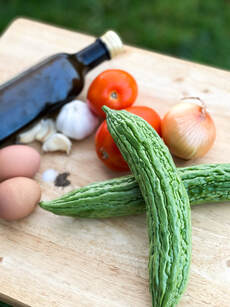 It’s 2023, and it’s time to ring out the old and bring in the new. As you embark on new beginnings, you will be surprised by how stories unfold and the goodness life has in store for you as you open up to trying new things and creating new goals. I think the world should celebrate more on the dates that we made changes and not just the fact that a year changes. That being the case, I hope you’re open to trying new things, embracing changes, learning, and living. I’m starting mine by spreading positivity and “GOURD” vibes all the way by learning about foods from different cultures and, at the same time, sharing my own. See what I did there with the “GOURD”? Let me share with you this humble vegetable-fruit called Bitter Gourd, which is not quite as famous and well-used here compared to where I came from, the Philippines. Keep reading as I will share tips on getting rid of the bitterness to make it a much BETTER gourd for you! What is Bitter Gourd? Bitter Gourd, also known as bitter melon, balsam pear, karela (in India), ampalaya (in the Philippines) or its scientific name Momordica charantia — a tropical vine of Cucurbitaceae, otherwise known as the gourd family. It belongs to the same family as squashes like zucchini and pumpkins, melons, and cucumbers. This plant thrives in both subtropical and tropical areas, including Asia, the Caribbean, South America, and some parts of Africa. Despite having a variety of names worldwide, two things remain consistent with this vegetable-fruit:
Did you know that Bitter Gourd... Is a rich source of vitamin C, which boosts your immune system, aids in decreasing inflammation, and promotes wound healing. It also provides folate, which is crucial for growth, development, and red blood cell formation. It also contains significant amounts of:
And if you’re still not impressed with this ingredient..
It's “gourd” for your…
Let the bitterness subside
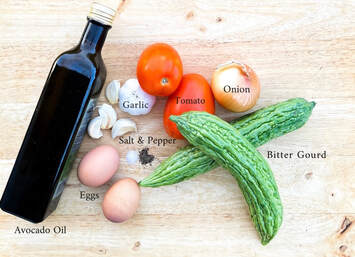 Stir-Fry Bitter Gourd Ingredients: 2 pieces bitter melon, cleaned & thinly sliced 4 cloves minced garlic ½ yellow onions, sliced 2 tomatoes, sliced into quarters 2 tablespoon avocado oil 2 raw & beaten eggs ½ tsp salt ½ tsp ground black pepper Directions: Soak the bittermelon with salt and water in a large bowl, then leave for 5 minutes. After 5 minutes, place the bitter melon in a cheesecloth, then squeeze tightly to drain excess liquids. Once the pot is heated, add the avocado oil and sauté garlic, onion, and tomato until translucent and fragrant. Add the bitter melon, give it a quick stir, then add salt & pepper to taste. Beat the eggs and pour over the bitter melon, then wait till the egg is partially settled before mixing. Serve hot, and enjoy! Optional: Add ground pork, beef, chicken, shrimp, or tofu to elevate this simple dish. Makes 4 servings Nutrition per 1 cup: 120 calories; 9.7 Fat; 3.6g Protein; 4.64g Carbohydrates; 1.2g Fiber; 103mg Sodium Incorporating Bitter Gourd is a great way to improve your eating habits this year; a low-calorie ingredient that retains the most helpful nutrients your body needs.
This is the only bitter taste you’ll ever need and a low-cost way to boost your health! Zamaira Chan, Dietetic Intern References: US Department of Agriculture. Bitter melon. Food Data Central, US Department of Agriculture. March 19, 2021. Accessed February 15, 2023. https://fdc.nal.usda.gov/fdc-app.html#/food-details/1548192/nutrients Clardy AE, Crudup S. Bitter melon. Tennessee State University Extension. Accessed February 18, 2023. https://www.tnstate.edu/extension/documents/Bitter%20melon%20fact%20sheet.pdf Silver N. Bitter melon and diabetes. Healthline. January 2018. Updated February 24, 2021. Accessed February 15, 2023. https://www.healthline.com/health/diabetes/bitter-melon-and-diabetes Diabetes co. Bitter melon and diabetes. Diabetes.co.uk the global diabetes community. January 2019. Updated January 25, 2023. Accessed February 15, 2023. https://www.diabetes.co.uk/natural-therapies/bitter-melon.html Elekofehinti OO, Ariyo EO, Orimoloye M, et al. Potential use of bitter melon (Momordica charantia) derived compounds as antidiabetics: In silico and in vivo studies. Pathophysiology. 2018;25(4):327-333. DOI: 10.1016/j.pathophys.2018.05.003 The thought of leaving the comforts of your own home for just a weekend can be daunting enough. Food allergies are notorious for being vacation wreckers, especially in a foreign country. It makes traveling less fun when you’re worried about whether or not you need to bust out the epi-pen or take an emergency rest stop. Whatever the symptoms, we all get a little leery about risking the possibility of ingesting something our bodies can’t tolerate. Personally, I have my own food allergy challenges having celiac disease. For those unfamiliar with this, it is classified as an autoimmune disease, where you cannot ingest gluten, wheat, barley, or any cross contaminants of it, with the likelihood of damaging your small intestine. I had yet to travel with my recent diagnosis of celiac disease until a unique opportunity arose. Through my Dietetic Internship at Seattle Pacific University, I had the chance to go on an international rotation in Shimla, India. Allergies aside, I couldn’t possibly turn down an opportunity like this. Through my recent experience of traveling with food allergies, I want to give you some helpful tips while traveling abroad. Tip #1: PACK SHELF STABLE SNACKS. I can’t emphasize this enough! This saved me in a couple of tough spots. It took us three days to get to India; we had a 24 layover in Japan, where all I could eat was plain rice and edamame. Gluten-free soy sauce or tamari did not exist and the language barrier was too hard to navigate. I got kicked out of a ramen spot because I couldn’t order any ramen! Needless to say, I was pretty hangry by the time we left Japan. I might not have made it if it wasn't for the dried fruit and nuts my professor had purchased from a vendor. So, bring protein bars, trail mix, dried fruit, jerky, or whatever sounds good to help you get through the trip. Tip #2: WHEN IN DOUBT, DON’T EVEN RISK IT. Let’s be honest; some languages are difficult to interpret, Hindi included. I used Google Lens to translate ingredients on packaged foods or menus when I could. When I could ask a person, I would. Luckily, our host during the trip was able to tell me what foods were safe. If you have neither and are still wondering what the heck is in your food, go with the safest option. Sometimes I felt uncomfortable eating at some places, so I would order a fresh lime soda and either eat back at our base or find something I felt safer eating. Tip #3: DROP THE GUILT. For most of the trip, I felt guilty for others having to accommodate for my dietary needs. I realized I don’t have to feel guilty about something that isn’t my fault. We didn’t ask to have allergies or intolerances. So OWN IT and enjoy being in a new country. It’s easy to let our worries cloud our enjoyment, especially when it comes to finding good AND safe foods. Tip #4: DO YOUR RESEARCH. Familiarize yourself with phrases and words you can communicate with and look up local dishes and cuisines that naturally accommodate your dietary restrictions. It’s good to be prepared for these scenarios; that way, you aren’t blindsided by anything. Just know that you are not alone when navigating the challenges of dietary restrictions! Resources like the International Food Anaphylaxis and Allergy Administration (IFAAA) are available. In some countries, they provide translations for food allergy information to give to restaurants, so you can let them fully understand your dietary needs. However, this is only available for a limited number of countries. Tip #5: TALK WITH YOUR DOC.
Before leaving, consult with your primary care provider or allergist for any recommendations or medications to take while away. Traveling with allergies is possible; just remember to do your research and be prepared. Luckily for me, India had a lot of gluten-free foods, so I did get to enjoy a lot of delicious Indian cuisine and snacks. I even discovered a new snack in India: Punjabi Tadka, which is naturally gluten-free since it’s made from different pulses and potatoes. Believe it or not, there are options for us abroad, so go explore, and happy traveling! Jesse Jorgenson, Dietetic Intern! |
SD BlogA place for our consultant Registered Dietitian Nutritionists (RDNs) to share nutrition science, yummy and healthy recipes, tips on seasonal ingredients, and other nutritional musings. Enjoy! Categories
All
Archives
May 2024
|





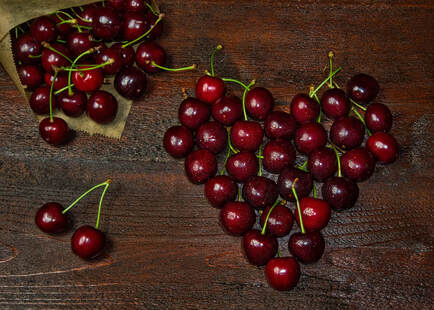
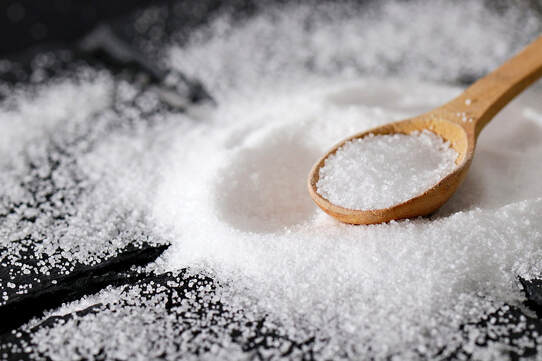

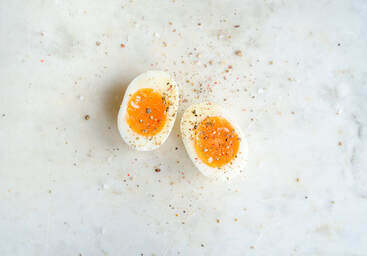






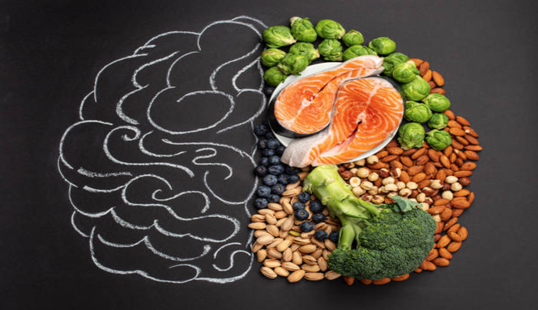

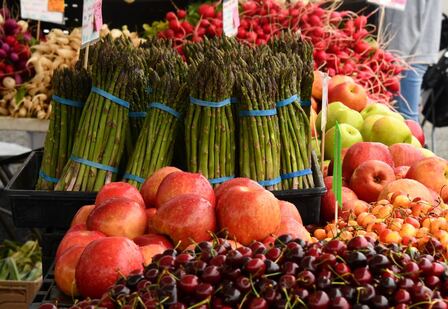
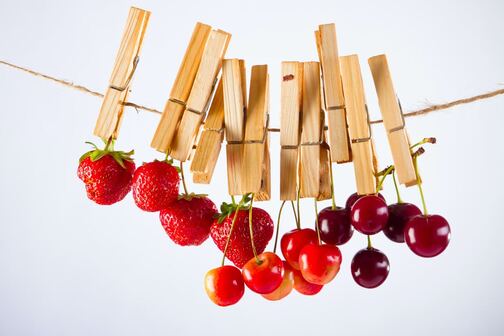

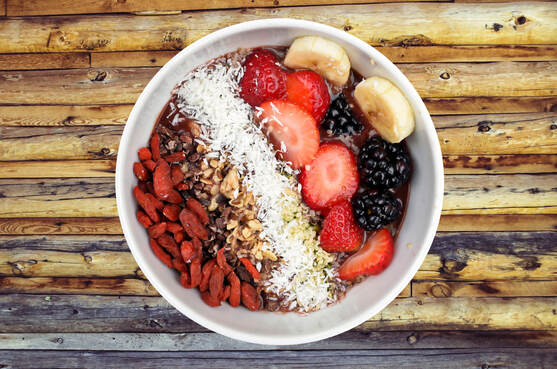
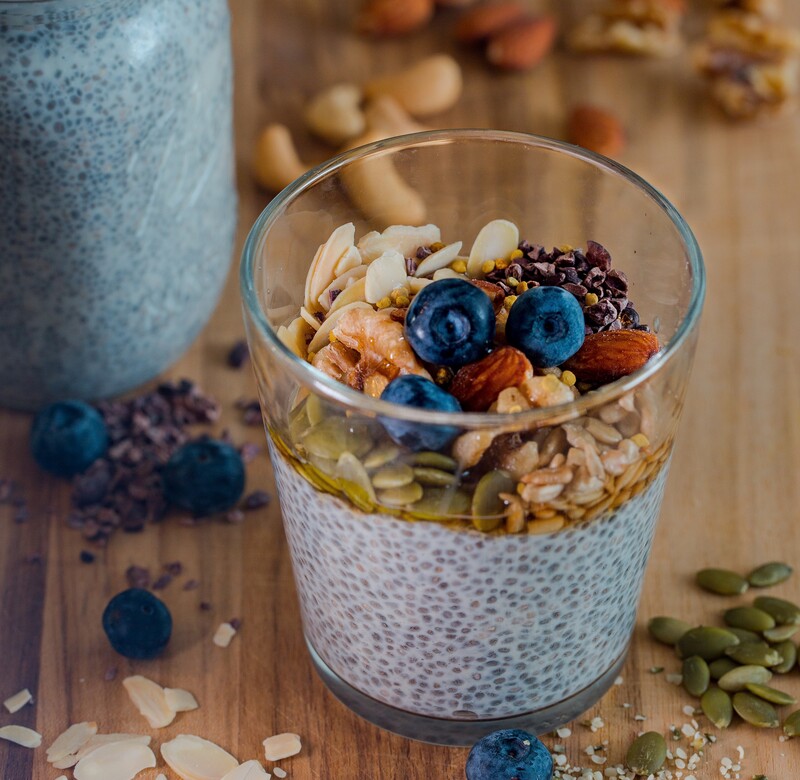
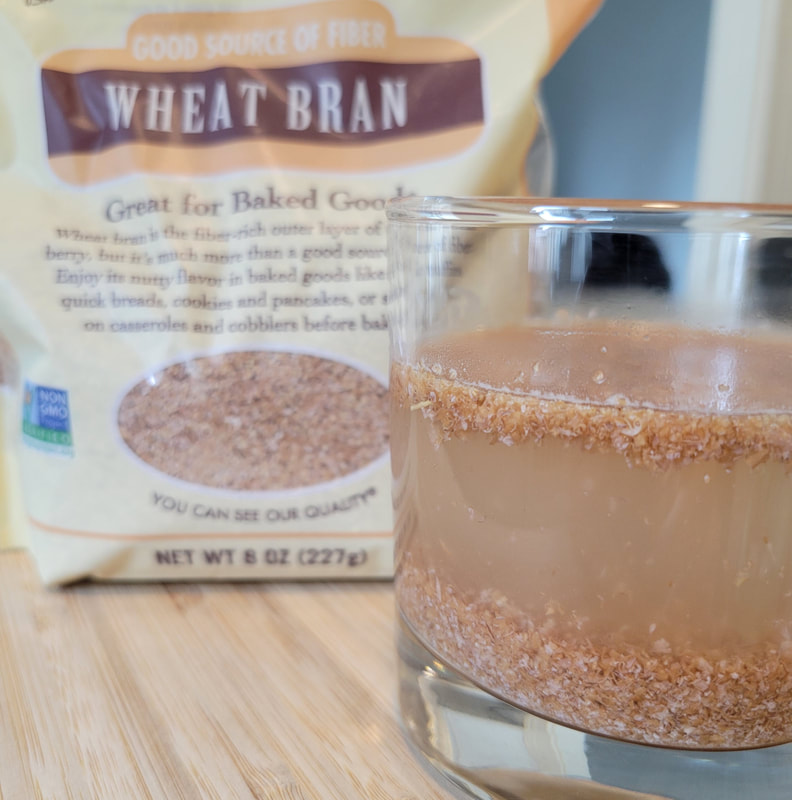
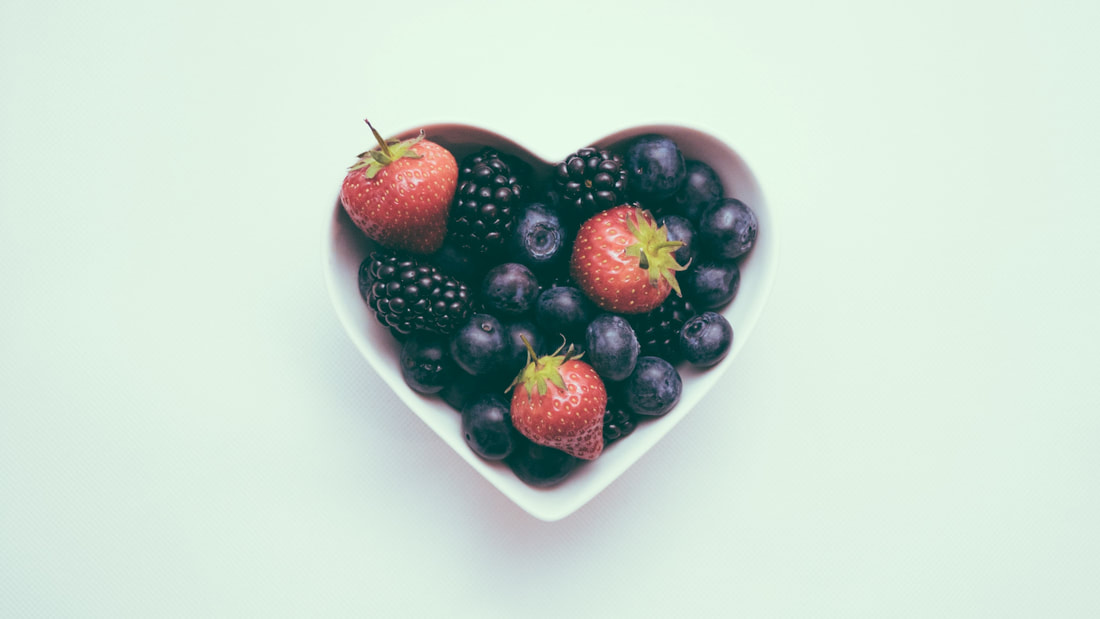
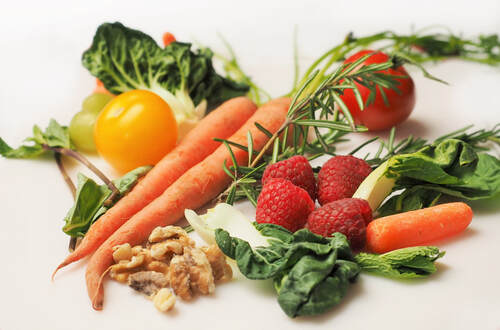

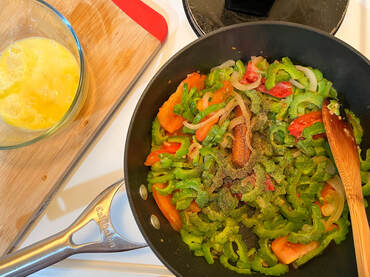
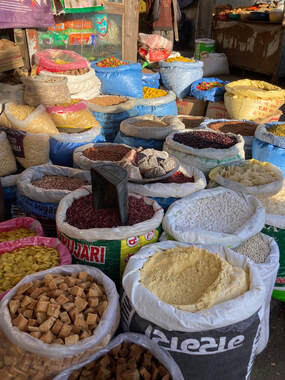
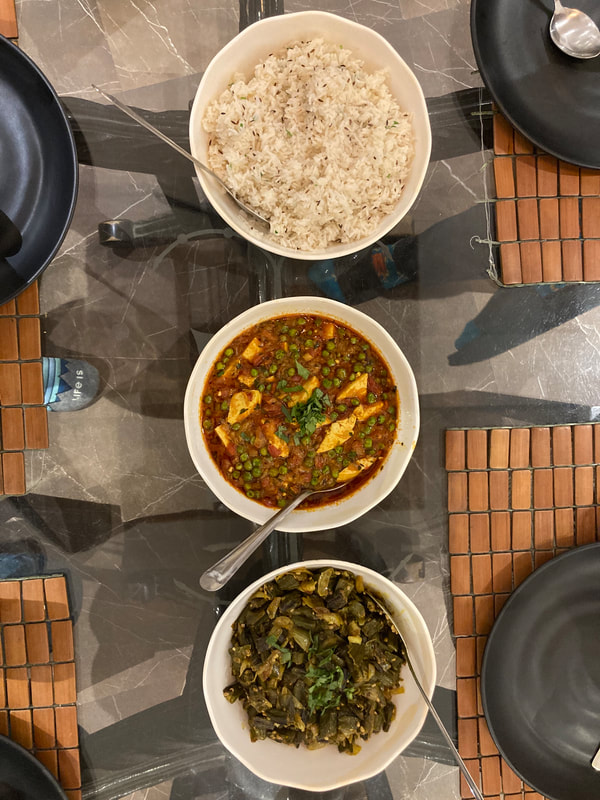
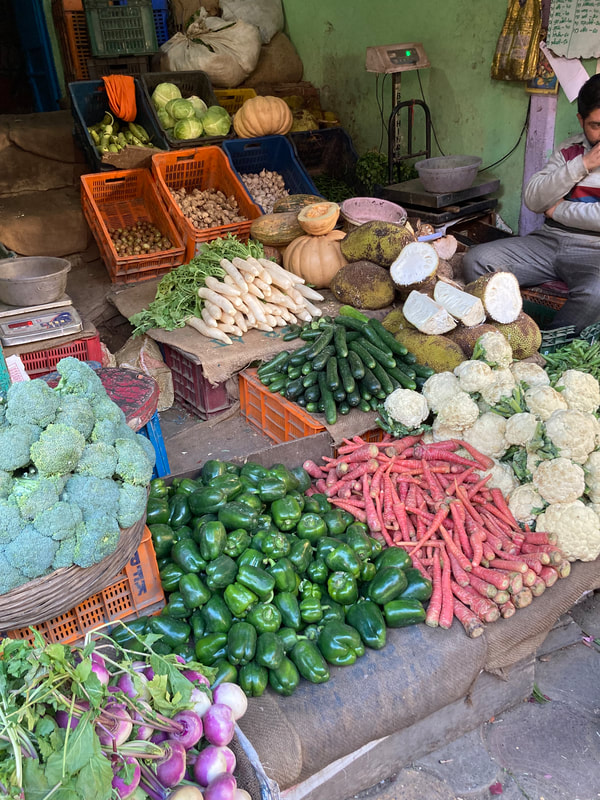

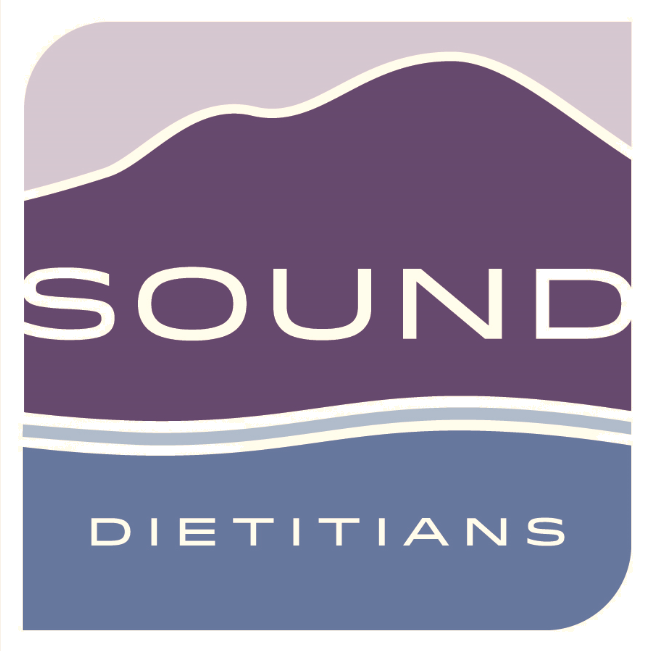
 RSS Feed
RSS Feed